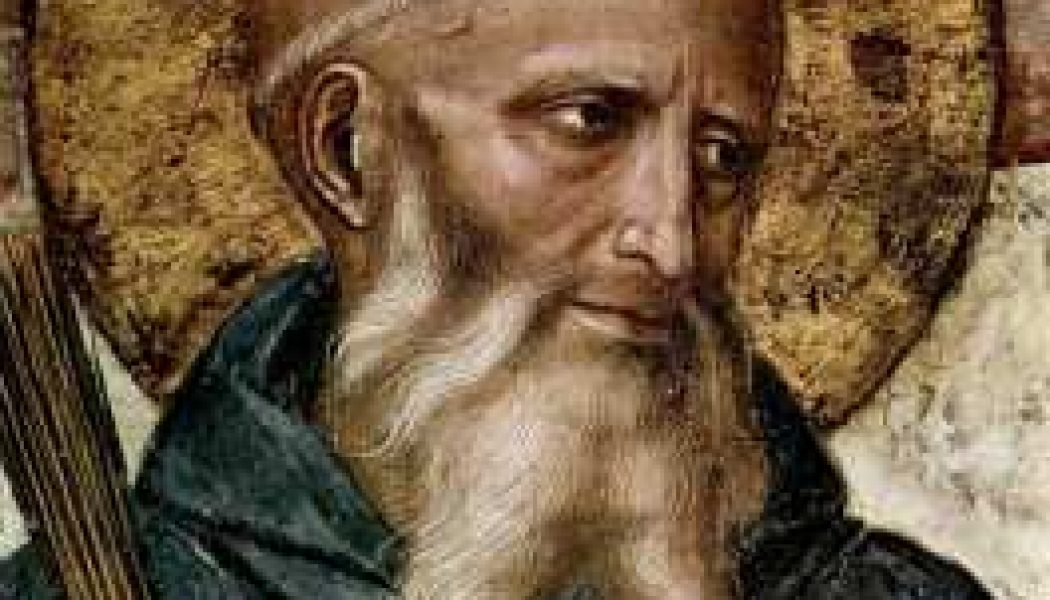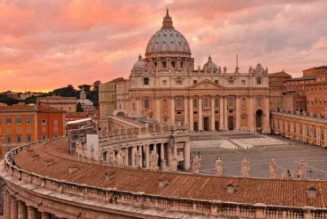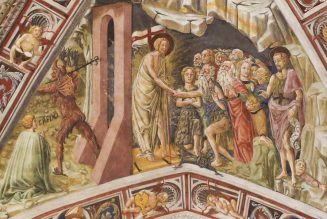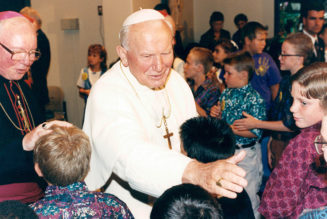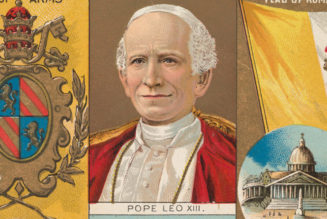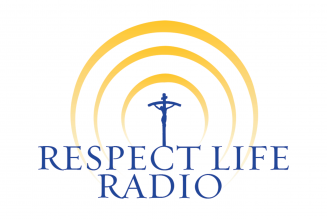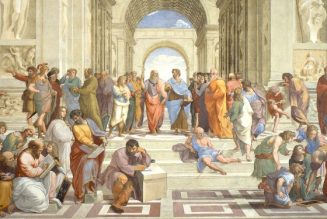
“Listen, my son, to the teaching of the Master,” Benedict exhorts his monks in the opening line of his Rule. Benedictine monks and nuns place themselves under the tutelage of St. Benedict’s Rule as a way of following Christ, the master. Entering into the monastic life is not taking on a contrived and superimposed life, but a following of the Gospel in a radical way, to live in a Christian community akin to Acts 2 and 4. Contemplative life vivifies the soul of the Church, sustaining all of us through a life dedicated to prayer. Monasteries also form the center of Christian culture by embodying a way of life completely formed by faith. Although few of us have a vocation to the cloister, lay people can also share the fruits of monastic life by becoming an oblate.
John Senior, while musing on the restoration of culture as a whole, pointed us to the monastery as an oasis in the desert of the modern world:
Today we are, I think, in times like those of St. Jerome, moving rapidly
toward those of St. Benedict. Barbarians have destroyed our cultural institutions, this time mostly from within; and now as then, it is true that there is nothing for the world to offer anyone. If I were a young man or woman seeking God today, I should enter, if I could, a Benedictine monastery. And if I were a Benedictine seeking God, I should work to reform my monastery so it conformed to the Rule of St. Benedict in its strict integrity, praying seven times a day the great Latin Office as recovered by the painstaking, sanctifying scholarship of Solesmes; and in the spaces between the hours, work with my hands at the immediate tasks of food and shelter. Or if I were called to the other vocations, the secular priesthood or marriage, I should become an oblate of such a monastery or at least keep as close to it as I could consistent with my obligations.The Restoration of Christian Culture, chapter 4, “Theology and Superstition”
The Benedictine tradition has received renewed interest through the popularity and debates surrounding The Benedict Option. I expanded on how Benedictines can inspire cultural renewal in my book, The Beer Option, which explores how monks created brewing as we know it and why they’re still the best brewers. Ultimately, however, I’m much more concerned about how they inspire me to live as a disciple of Christ in the modern world, building up a Christian culture through a way of life centered on ora et labora, prayer and work.

Here are the reasons I became a Benedictine oblate:
- Wanting a clear anchor and focus in my spiritual life
- Looking to the monastery as a model of Christian culture and inspiration for rebuilding culture today
- The daily union of prayer and work
- The connection between the role of the abbot and my vocation as a father
- The importance of liturgical prayer in my life
- Drawing upon the poetic nature of the monastic life (see Newman’s The Mission of St. Benedict) in my work in education
- The role of Benedictines in rebuilding Western culture in the Dark Ages, creating schools, hospitals, libraries, art, and stability
- The great history of Benedictine saints: Gregory the Great, Ven. Bede, St. Boniface, the sainted abbots and popes of Cluny, St. Hildegard, St. Bernard, St. Gertrude the Great; Ven. Prosper Guéranger, and Bl. Columba Marmion
- A love for Gregorian chant, monastic architecture, and the food (especially cheese) and beer produced by monks
- The witness of modern oblates and those inspired by this great tradition, such as Pope Benedict XVI (see his great Paris lecture on how monasticism builds culture)
What does it mean to be a Benedictine oblate?
St. Benedict uses the term oblate (“offered”) to refer to children who were offered to the monastery by their parents to be raised and educated there, presumably to become a monk when they came of age (as St. Thomas Aquinas at Monte Cassino). This practice was eventually abolished and the term oblate came to refer to those who made an offering of themselves to the monastery while remaining in the lay state. It could refer to associates of the monastery who lived in the nearby community, local priests or consecrated laypeople who wanted to live a quasi-monastic life (like St Frances of Rome), or nobility (most famously the Emperor Henry II) who wanted to share in the benefits of monastic life.
An oblate today generally is a lay associate of a monastery (although there are still priest oblates). You become an oblate by taking promises, akin to the vows outlined by St. Benedict in his Rule: obedience, stability, and conversion of life. These promises–taken initially for a year as an oblate novice before taking them permanently–do not bind under pain of sin. The promises make you a lay member of a particular monastery, not a member of a general third order. The stability binds you to one community, not a larger group of lay people throughout the world (as you see in the Franciscan or Dominican third orders). Obedience pertains to following the Rule as you can, being obedient to the Church, and following the guidance of your spiritual director. Conversion of life constantly impels the oblate to seek holiness and to overcome vice through prayer and penance.

An oblate wants to follow the teaching of the Master, forming a spiritual bond to the prayer and work of a monastery. Although not a monk or nun, the oblate still strives to live the Benedictine life in the world according to his or her primary vocation. Here are a few characteristics of the life of an oblate:
- Daily reading of the Rule and following its direction and spirit as much as possible
- Praying at least some of the Divine Office (Liturgy of the Hours) each day
- Practicing Lectio Divina, including reading the great Benedictine spiritual masters
- Visits to the monastery for retreats and oblate meetings (which vary in frequency depending on the monastery)
- Most importantly: spiritually uniting your prayer and works to those of the monks or nuns
How to Discern Becoming an Oblate
I’ve received a number of inquiries through Building Catholic Culture about how to discern becoming an oblate. Here are my suggestions:
- Read the Rule and a commentary on it for oblates (my recommendation is Fr. D.A. Simon’s)
- Visit a few monasteries, as it entails discerning a stable connection to a particular place
- Decide if you are looking for a particular Benedictine charism, such as traditional Gregorian chant (e.g., Clear Creek Abbey), Eucharistic adoration (e.g., Silverstream Prior), education (e.g., St. Vincent Archabbey), or the spirituality of the Cistercians, Trappists, or Camaldolese
- It can also be important to consider how faithfully a monastery adheres to the Rule (as there is a wide range of practice)
- Consult an oblate manual. I would recommend an older version, such as Dom Alcuin Deutsch’s (although it can be hard to find)
- Read some of the works of Benedictine saints and spiritual writers. Some recommendations would be St. Gregory’s Life of St. Benedict, the writings of St. Bernard, the books of Bl. Columba Marmion, The Spirit of Solesmes, which embodies a liturgical spirituality, In Sinu Jesu focused on Benedictine Eucharistic adoration, and a novel written by an oblate, Rumer Godden’s In this House of Brede
- Talk to Benedictine monks or nuns and oblates about your desire
It can be hard to become an oblate across long distances, and I live twelve hours from my monastery, Our Lady of Clear Creek Abbey, but in this case it is important to keep the spiritual connection in mind every day. I pray for the monks there and my fellow oblates each morning and try to end the hours of the Office the way St. Benedict recommends: Divinum auxilum maneat semper nobiscum. Et cum fratribus nostris absentibus (May the divine assistance remain always with us. And with our absent brethren). I know others who have even become oblates at overseas monasteries, especially Silverstream Priory in Ireland and the Monastery of St. Benedict on the Mountain outside of Norcia, Italy (St. Benedict’s hometown), both founded by American Benedictines.
Living the Rule in the World
There are many examples of how oblates have drawn on the Benedictine tradition to transform culture. Here are some of the most famous oblates, including rulers, intellectuals, martyrs, novelists, and servants of the poor:
- St. Henry II – Holy Roman Emperor
- St. Thomas Beckett – Archbishop of Canterbury, martyr
- St. Thomas Aquinas – child oblate at Monte Cassino
- St. Francesca (Frances) of Rome – widower and founder of a group of oblate women who served the poor
- St. Oliver Plunkett, Archbishop of Armagh, martyr
- Joris-Karl Huysmans – novelist, including The Oblate
- Jacques Maritain – philosopher
- Walker Percy – novelist
- Servant of God Dorothy Day – founder of the Catholic Worker Movement
These men and women show us how the Benedictine ideal can guide us in us building Catholic culture. It is my strong conviction that St. Benedict can inspire our efforts to build new communities of faith and to form a culture centered on prayer and work.

One example is The Catholic Worker Movement, which, despite any controversy over its commitment to pacificism and social activism, found its original inspiration in Peter Maurin’s study of the medieval monasteries. He encouraged Dorothy Day to establish houses of hospitality and farms to bring a monastic-inspired vision into the modern world. Peter was not as interested in social activism (he wanted to call the movement the Catholic Radical – going back to the roots and used to say “strikes don’t strike me”) and sought to encourage interpersonal encounters through hospitality, discussion of important books and ideas, and to help people to work with their hands (especially during the Great Depression). He described his monastic-inspired vision as cult (worship), culture (education), and cultivation (work). Dorothy Day pointed to him as her inspiration for becoming an oblate:
How Peter loved St. Benedict whose motto was “Work and Pray.” He is happy, no doubt, that I, his co-worker, was professed last month as a full oblate of St. Benedict, attached to St. Procopius Abbey, the mission of which is to work for unity between east and west, and which aims to set up a shrine to the eastern saints, at the monastery at Lisle, Illinois. He loved St. Benedict because he said that what the workers needed most was a philosophy of work. He loved St. Francis because he said St. Francis, through his voluntary poverty, was free as a bird. St. Francis was the personalist, St. Benedict the communitarian.
One final image captures the oblate spirit well: Millet’s “The Angelus.”

Although not directly related to monasticism, Millet captures the spirit of prayer and work embodied in faithful Catholic life. Hearing the church bells, this young couple stops their work to recite the Angelus, inviting Christ to become incarnate in that moment. The Angelus captures a glimpse of the monastic rhythm of prayer, prayed morning, noon, and evening. This painting explains with its simplicity the heart of the oblate life: prayer and work. Perhaps culture will be rebuilt with such simplicity: deep, strong yet gentle, and largely imperceptible by the world.
